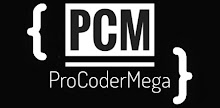A Network Topology tells how the nodes/devices in the network will be connected with each other. There are various types of topology that we use as per our needs.
Bus Topology
In Bus Topology there is a Main cable, also known as Backbone cable where all the devices in the network are connected. All the data will transfer from that single long cable from one end to another end. Bus Topology is multipoint i.e. it has more than two terminals connected in a network.
Drop Line - It is the connection between the cable and the device.
Tap - It is responsible to pass/cut the connection from the main cable.
Advantages
- Low Cost.
- Less amount of cable needed.
- Easy to install.
- Good choice for small networks.
Disadvantages
- If the Backbone cable have any issues then the whole network may get down.
- Detecting fault is difficult.
- There is a limit of how many devices/nodes we can connect with the main cable.
- Heavy network traffic.
Ring Topology
In Ring Topology each device is connected with the very most adjacent two device. Due to this the topology forms a structure of a ring.
We can also say that Ring Topology is like bus topology, but with connected ends. The data is passed from device to device until it reaches its destination, that's why we have repeaters in each of the device to regenerates the data and prevents the case of attenuation.
Advantages
- Easy to install.
- Can easily identify the fault.
- Easy to reconfigure i.e. we can easily manage the devices in the network because if we need to add/remove any device, we just need to change two links.
Disadvantages
- If more than one node is down then the whole network will be down.
- Reconfiguring the network may disturbs the network activity.
- Unidirectional traffic.
Star Topology
In Star Topology each device is connected with a central controller known as Hub. There is no direct traffic between the devices/nodes, all the traffic goes through the hub. Star Topology uses point-to-point connection.
Advantages
- Easy to identify fault in the network.
- It is robust in nature i.e. if one device fails, it will not bring down the entire network.
- It requires less cable than Mesh Topology.
- Easy to install and reconfigure.
- Less expensive in compare to Mesh Topology.
Disadvantages
- If the central controller, hub fails then the whole will get down.
- Even if it requires less cabling than Mesh, when compared with other topologies it still large.
- Cost of installation is high.
Tree Topology
In Tree Topology there is a root node and all other nodes are connected to it forming a hierarchy, therefore it is also known as Hierarchical Topology.
This topology imitates as extended Star Topology and inherits the properties of Bus Topology. There is only one path exists between two devices/nodes.
Advantages
- Easy to expand the number of nodes.
- Easy for network management.
- Fault detection is easy to identify.
Disadvantages
- It is costly.
- A lot of cabling is required.
- If central hub fails, then the whole network fails.
Mesh Topology
In Mesh Topology each and every devices/nodes in the network is connected with all the other nodes by dedicated point-to-point connection i.e. if there are 'N' nodes in the network then each node is connected with 'N-1' number of nodes.
Advantages
- Very less network traffic.
- It is robust and reliable.
- Failing of one or some more nodes will not bring down the whole network.
- Fault detection is easy to identify.
- It gives more security and privacy in the network.
Disadvantages
- Very expensive.
- A large amount of cables are required.
- Number of I/O ports required are very large.
- Management is difficult due to large amount of cables.
Hybrid Topology
In Hybrid Topology there is two or more than two different topologies implemented in the same network at the same time.
Advantages
- We can choose the most appropriate set of topologies as per our requirements.
- It is flexible.
- It is easily expandable.
- It is effective i.e. we can design the topology in such a way that minimizes the disadvantages and maximizes the advantages.
Disadvantages
- Installation is difficult.
- It is costly due to complex structure.
- High maintenance is required.
For giving some suggestions please comment us or check our "Contact us" page. More update related to coding and technical stuffs will be added later in this Blog. To stay updated follow our Blog just by clicking the follow button. Thank you for your support and time...















0 Comments